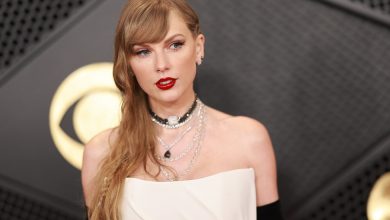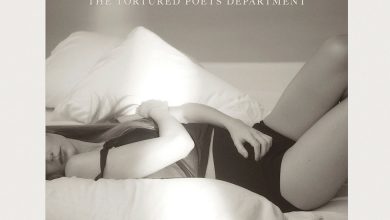Onstage, ‘Designing Women’ Sheds the Shoulder Pads, Not Its Politics

FAYETTEVILLE, Ark. — Linda Bloodworth-Thomason, the Emmy-nominated writer and producer, started hearing voices earlier this year, voices she hadn’t heard in nearly 30 years. Those voices wouldn’t shut up.
“I told my husband, I’m going to have to get a gun and shoot them,” Bloodworth-Thomason said during a recent phone conversation.
She didn’t know how else to make them stop.
The voices were those of Julia Sugarbaker, Suzanne Sugarbaker, Mary Jo Shively and Charlene Frazier, the characters from “Designing Women,” the half-hour sitcom that premiered on CBS in 1986. Nominated for a slew of Emmys, it won only one, for outstanding achievement in hairstyling. Set in Atlanta, and centered on a quartet of mouthy women who orbit an interior design firm, it combined feminist politics with click-clack comedy rhythms, celebrating the New South with wit and pluck and shoulder pads.
The show earned her, Bloodworth-Thomason said, citations from both Mitch McConnell, who had praised an antipornography episode, and the A.C.L.U. The A.C.L.U. one she framed.
The show wrapped in 1993. Prime time and popular culture moved on. But friends and fans would often ask Bloodworth-Thomason what Julia, the outspoken founder of the design firm, played by Dixie Carter, might say about same-sex marriage or the #MeToo movement or the election of Donald J. Trump to the presidency.
More recently, Bloodworth-Thomason began to think about answers.
Those answers coalesced into a two-act comedy, “Designing Women.” Directed by Bloodworth-Thomason’s husband, Harry Thomason, the play had its premiere recently at TheaterSquared, in Fayetteville, Ark. (Thomason grew up in Hampton, Ark.; Bloodworth-Thomason in Poplar Bluff, Mo., just over the border.) The play runs through the end of October. It will also be available to stream, starting Oct. 15.
A sleek, glass-walled building, a paper airplane’s flight from the University of Arkansas campus, TheaterSquared occupies a busy-ish corner. It has two theaters: the West, where “Designing Women” plays, which seats 275, and the Spring, which seats 120. The building hosts rehearsal spaces, administrative offices, scene and wardrobe shops, a flexible lobby performance space and a welcoming cafe where pastry always seems to be baking.
Its programming favors lively dramas and musicals from contemporary playwrights of diverse backgrounds. This season includes Katori Hall’s “The Mountaintop,” Mike Lew’s “Tiger Style!” and Kristoffer Diaz’s “The Elaborate Entrance of Chad Deity.” Fayetteville, where more than 77 percent of residents identify as white, is not itself especially diverse.
“If you’re a theater company that sets as its mission creating a more equitable community, then you want to bring people along,” Martin Miller, the theater’s executive told me. He had found me on the cafe’s patio, in early September, demolishing some local goat cheese. I’d come to northwest Arkansas for a few days of table work and rehearsal because I had wanted to see if an ’80s sensation, a sensation I had loved as a kid, still had anything to say to a 2020s audience. And, if I’m honest, I wanted to know just what this sensation was doing in Fayetteville.
In “Designing Women” — the theatrical version — the diversity centers on the class backgrounds of its characters, their religious beliefs, their voting patterns, as the TV one had. Set in the very recent past, the script eavesdrops on the women and a few new characters as they contend with the pandemic, the possible financial collapse of their firm and the 2020 presidential election. It is no spoiler to say that the women ultimately triumph, bridging their differences stylishly. The creators and producers hope that it will encourage audiences across the political spectrum to build some bridges, too.
“We just need to look at each other with more grace and more love, that’s what I’m gathering from this play,” Carmen Cusack, the Tony-nominated actress who plays Julia in the theatrical version, said. “At the end of the day, what’s most important is just appreciating that we’re all in this together.”
The original “Designing Women” wore the skirt suits and heels of a workplace comedy. But the workplace occupied Julia’s living room, so it was a domestic comedy, too. Part of a late ’80s boom in women-centered shows that included “Roseanne” and “Murphy Brown,” it wrestled — sometimes explicitly, sometimes obliquely, often in heels — with the feminist discourse of the day.
Joan Williams, the director of the Center for WorkLife Law at the University of California Hastings College of the Law, described the series as a helpful fiction suggesting that women could have both careers and families without apparent conflict. “It opened a fantasy, a conceptual space, an idealized image that it was going to be possible for women to be very successful professionals and very successful mothers,” Williams said.
The fantasy largely favored an empowerment agenda, implying that if a woman just tugged on her big-girl panties and stood up tall in them, she could bend the world to her will. But episodes also exposed systemic problems — sexual harassment, violent pornography — without offering easy answers.
“‘Designing Women’ really did try to speak to the particular political moment, even as it attempted to negotiate it within the politics of television,” said Alfred Martin, a media and cultural studies scholar at the University of Iowa.
The show wasn’t entirely progressive. Its sole character of color, Anthony Bouvier (Meshach Taylor), had a subordinate role in the firm, and queer characters were rare. But it gave its characters divergent attitudes, insisting that the experience of women wasn’t uniform. In a logline, the characters might have come across as stereotypes — hardass, bimbo, pragmatist, naïf — yet as played by Carter, Delta Burke, Annie Potts and Jean Smart, they had smart minds and big hearts. Even as they fought, they supported one another.
That’s what makes this theatrical version of “Designing Women” more than an attempt to capitalize on familiar intellectual property. As a television show, it straddled the political divide, allowing both progressive and conservative women to see themselves represented, glamorously. Those divides are wider now. But if these characters can still talk to one another onstage, maybe audience members can continue those conversations offstage, with or without repartee.
Though TheaterSquared announced the show in early 2020, Bloodworth-Thomason didn’t start writing it until this year, ultimately amassing some 7,000 pages. (Those voices really wouldn’t shut up.) The September draft flaunted her practiced style, a rapier wit with a bedazzled handle, and included a few callbacks for dedicated fans, like a riff on Julia’s “the lights went out in Georgia” speech.
The feminism still isn’t especially intersectional, even as the firm now includes a co-owner who is Black and queer, Anthony’s cousin Cleo (Carla Renata). But the script has updated its politics. The first line has Julia instructing Hayley (Kim Matula), the new receptionist, in temperature checks for clients. “If they refuse, kick ’em out,” Julia says. “If they’re wearing a MAGA hat, don’t let ’em in.” In the background a voice mail message plays, calling Julia a “lying socialist slut.”
Bloodworth-Thomason dreams of a tour of the South for the play and an eventual berth on Broadway. But it’s dialogue like this that explains why she and Thomason chose TheaterSquared for the tryout. Washington County, which encompasses Fayetteville, went for Trump in 2020, though by a somewhat narrow margin — 50.39 percent to Trump, and 46.49 percent to Joseph R. Biden’s ticket — and the theater attracts spectators who don’t all vote the same way.
“I know that not everybody who walks in the door would automatically agree with me in a conversation over a beer,” Miller told me. But the theater deliberately programs plays that prompt those conversations. And the cafe has 16 local beers on tap.
On a Tuesday, about two weeks before previews began, the theater thrummed with activity — set painting, costume stitching, wig combing. The scenery was half assembled, and a variety of faux topiary dotted the back of the auditorium. The theater had recently announced new Covid protocols, which require that audience members offer proof of vaccination or a recent negative test, and Miller had to devote several hours to handling angry responses, like an email describing the protocols as “an imperialist act against our democracy” — only a step or two removed from “lying socialist slut.”
Upstairs, in the rehearsal space, the masked actors arrayed themselves around several folding tables, with cookies and water bottles in reach. Bloodworth-Thomason had hoped to join them, but an illness had kept her at home in Los Angeles. (A glitchy Zoom connection made table work possible.) Though the characters ought to be in their 70s by now, the actresses, and a few male love interests, were mostly in their 50s, suggesting either a suspension of disbelief or some superb plastic surgeons. The mood was friendly, while also faintly tense, a reflection of the work ahead.
Playing beloved characters — characters associated with even more beloved actresses — applies deep-tissue pressure. Most of the actors had seen the show during its original run. (Cusack, who grew up in an evangelical Christian household, is an exception.) They spoke, feelingly, about what it had meant to see smart women, funny women, Southern women, beamed into their living rooms. Several of them voiced an obligation to honor those performances.
“I do feel a responsibility, particularly to the fans,” Elaine Hendrix, who plays Charlene, said.
In an interview the next day, just before rehearsal, Thomason said he hoped that this cast would capture some of the aura of the original actresses, without quite impersonating them. “That’s all one can hope for,” he added. “Because if you try to just duplicate them, then the audience will not forgive you.”
During the rehearsal, as coffee bubbled in a percolator, everyone tried to inhabit the characters, old and new, even when the characters voiced opinions that diverged from the actors’ own.
“It’s the challenge, right?” said Matthew Floyd Miller, who plays Suzanne’s latest ex-husband, a Trump supporter. “How do you sympathize and humanize somebody who has diametrically opposed views than you do?”
But what will audiences forgive? What will get them in the door? There’s already a glut of reboots, reimaginings and screen-to-stage variations. And not everyone wants to see “Designing Women,” which was overtly political to begin with, revived for our era. Thomason had heard from friends about some people’s plans to protest the show, even before they knew a lick of its plot or a line of the script.
That didn’t faze his wife. “I would love to see a big crowd outside with a lot of signs,” she said.
It did, however, give some of the actors pause. “I’m a little nervous because I say some stuff that is blunt and is hard-core and is extremely politicized, and I’m a Black person in Arkansas,” Renata said.
When Cusack told her mother about the show, her mother told her she planned to be among the protesters. Cusack didn’t try to dissuade her. “I said, ‘Mom, I’ll buy your plane ticket,’” Cusack recalled. “‘Come. Bring it. Let’s have the discussion.’”



